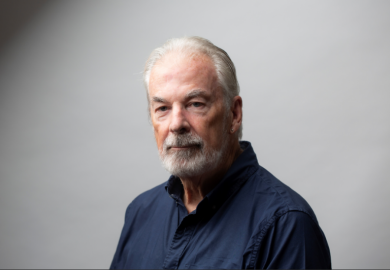One of the frustrations of academic life is attempting to keep up with journal output. So a new journal to add to the proliferation concerned with higher education does not necessarily gladden one's heart. Teaching in Higher Education arrived on the market in 1996. At first glance, it might seem that it does have a distinctive niche, because no other higher education journal mentions "teaching" in its title. However, many do already cover teaching as part of a larger brief - to name but a few, Assessment and Evaluation in Higher Education, Higher Education, Higher Education Review and Studies in Higher Education - so there is no shortage of outlets for those who want to publish or keep up with research in this area. Moreover, while some of the articles in the new journal might be of interest to a wide audience of academics concerned with teaching, for example, "What can we learn about teaching from our best university teachers?" or "Same-year paired peer tutoring with first-year undergraduates", others seemed far too specific, and more relevant to the many discipline-based teaching journals that are also on the market, for example, "Reflections on teaching physics to science and engineering foundation students", or "Nursing education in universities - a perspective from the biological sciences".
In any case, it turns out that Teaching in Higher Education also seems keen to embrace a wider remit than just teaching and learning, as its policy statement reveals. There we are told that it is concerned to "develop a conceptual analysis of issues relevant to teaching and learning", to "explore the various types of values which underlie teaching and learning" and to "focus on policy and its influence on the relationships between teaching and research". Again, these areas not only overlap with the huge number of higher education journals already in exist-ence, but also with those such as Journal of Philosophy of Education and Journal of Education Policy, which themselves often contain articles on higher education relevant to these policy statements.
However, while there is considerable overlap between this journal and many others, there are two key differences. The journal "expects" contributors will "adopt an approach that is prepared to take a critical view of currently dominant managerialist perspectives and policies", and it has a "view of learning which entails concepts of transformation and critique in relation to dominant traditions and visions". There is further elucidation of what this means: articles for submission, we are told, should "adopt a questioning or critical approach in general, and particularly in relation to concepts such as 'quality', 'standards' or 'academic freedom' which are part of a professional discourse whose terms are often unexamined in the debates on higher education."
Having a range of critical viewpoints jostling for attention is one of the hallmarks of academic discourse, so on one level this distinctive approach should be welcomed, ensuring that there is a ready outlet for this type of critique. However, this does mean that there is the danger that this journal's concern to attract such a perspective might result in its not being found, as it often is now, in a range of other journals. Another hallmark of academic discourse is the discouragement of the marginalisation or ghettoisation of particular approaches, particularly those critical of the dominant discourse, and this new journal might lead to that occurring.
The journal does have one interesting innovation, perhaps related to this "critical" perspective: the "points for debate". These are short pieces of no more than 2,000 words that are not expected to conform to standard academic conventions, and could be in the form of "poetry, dialogue, short rhetorical or journalistic pieces" or "outline ideas". (In the three parts of volume one, none seemed particularly imaginative, although one of the book reviews was very innovatively written in the form of a dialogue.) The expectation is that these pieces will be published more quickly than other articles, and presumably will not be subject to the same standards of peer refereeing. While this sort of innovation again has its attractions, it could lead to some confusion when such articles get cited - if such a piece is referenced as having appeared in Teaching in Higher Education it might be thought to carry more authority than it actually does. A playful piece of journalese might end up taking on unwarranted academic respectability.
Of course, in the end it will be the market that decides whether this is a journal which can compete with others, or even displace them entirely. It certainly does have its own distinctive niche, but whether it is distinctive enough remains to be seen.
James Tooley is university research fellow, faculty of education, University of Manchester.
Teaching in Higher Education (three times a year)
Editor - Len Barton
ISBN - ISSN 1356 2517
Publisher - Carfax
Price - £28.00 (indiv.), £98.00 (inst.)
Pages - -
Register to continue
Why register?
- Registration is free and only takes a moment
- Once registered, you can read 3 articles a month
- Sign up for our newsletter
Subscribe
Or subscribe for unlimited access to:
- Unlimited access to news, views, insights & reviews
- Digital editions
- Digital access to THE’s university and college rankings analysis
Already registered or a current subscriber?



